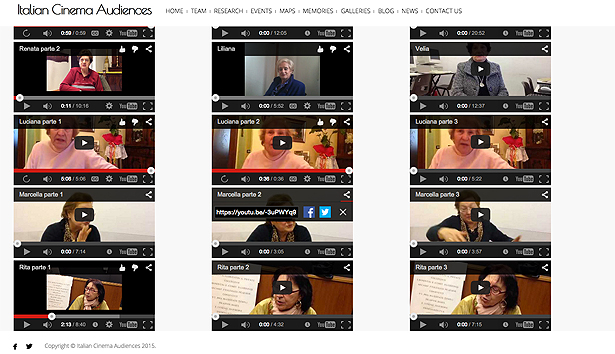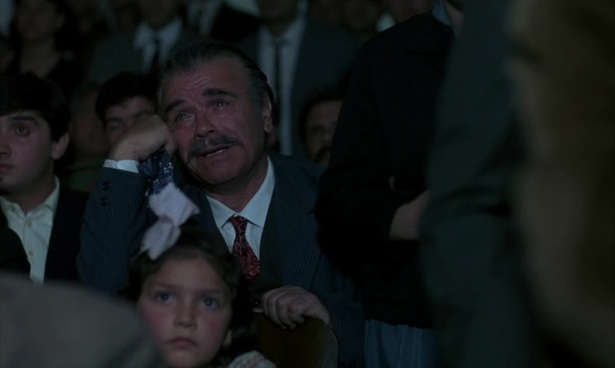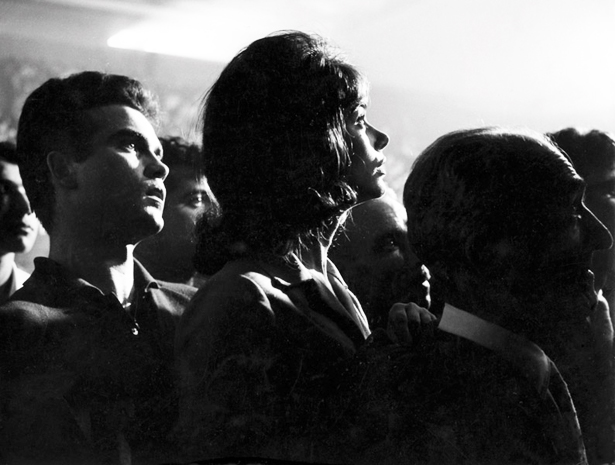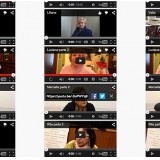In this post, I am not going to discuss a particular film but share with you a very special project I came across the other day.
I’d like to give the discovery credit to my favorite Twitter hashtags – we all have our own lists – that keep me abreast about the greatest and latest news in Italian cinema. In my list, you will find the typical suspects of Italian filmmakers, film fests, distribution companies and special influencers – all focusing on the business of cinema, and primarily – the directors and stars that are front and center.
That’s why I was very enthralled to come across an exciting research project called “Italian Cinema Audiences” that takes the focus away from the stars and directors, not even venturing behind the scenes to explore how films were made – but tracing the imprints of cinema-going experience through the eyes of non-expert audiences who experienced the films first hand in Italy of 40’s-50’s.
Now that’s innovative!
 Italian Cinema Audiences – video memories
Italian Cinema Audiences – video memories
The project is led by Daniela Treveri Gennari (Oxford Brookes University), Catherine O’Rawe (University of Bristol) and Danielle Hipkins (University of Exeter), and funded by the Arts and Humanities Research Council (AHRC).
This unique angle resonated with me on several levels:
First, audience’s perspectives are typically ignored. In the US, you may have heard about major studios running focus groups before a movie release to gauge success, the weekend box office attendance results or occasional interviews of viewers’ impressions as they leave the theater. In large, audiences are treated as faceless amalgam of data, where you need to serve them the right content on bulk for them to be satisfied.
And just to balance the picture a bit, with the emergence of social media, there is also a counter trend that democratizes the voice of audiences in shaping a buzz around released films. This helps filmmakers create a vibrant community around their films with direct, unfiltered communications with audiences. In this rubric, you may also include personal movie blogs like this one that provides an open mic environment for movie fans to express their views.
 Giuseppe Tornatore’s 1988’s Cinema Paradiso, includes many audience-focused scenes
Giuseppe Tornatore’s 1988’s Cinema Paradiso, includes many audience-focused scenes
This dual phenomenon that on one hand flattens audiences’ voices driven by old ways of evaluating public response and the emergence of social media that empowers audiences to express their views and thus shape perceptions – has no relevance when you try to understand public response to cinema decades ago.
And that’s why I think Italian Cinema Audiences project is important. Through myriad of video interviews it captures first hand testimonials of audiences who experienced cinema as part of growing up in Italy’s 40’s and 50’s. It’s all about real stories by real people. Behind their stories new personal worlds are recreated, maps of their movie theaters emerge, common norms (e.g., women did not go alone to the movies), entertainment habits and general preferences.
Second, I like peeking into the perspective of non-expert audiences and get a glimpse into their world. It reminds me of Ermanno Olmi’s comments about the importance of facial expressions in his 1962 film Il Posto – The Job. Committed to the Neorealism genre, he said that he always preferred working with non-professional actors in their genuine environment because that’s the only way he could extract the most authentic acting as they played themselves. In Il Posto, for that reason he hired people that were actually looking for a job at the time.
Another, interesting Olmi’s principle was his conviction that focusing his camera on facial expressions of an actor that is on the receiving end of a dramatic development (e.g., another actor speaking or a leaving train) is more important than focusing on the action source.
I think Italian Cinema Audiences project works the same way by shifting our attention from the typical limelight to simple, authentic and very human stories that shed much genuine light on the cinema-going experience of the 50s. Beyond the research value, I find this as placing a clever shot-in-shot neorealist tactic that works great here.
 Movie watching in an over-crowded movie theater in Mario Monicelli’s
Movie watching in an over-crowded movie theater in Mario Monicelli’s
1962 Renzo e Luciana – part of Boccaccio ’70
Third, I liked the video interviews that some revealed a clear preference for American films over Italian during 40’s – 50’s. One lady named Natalia, when asked about her thoughts about Neorealism, responded that at the time she didn’t like this genre that much as it created bad publicity about Italy by focusing on poverty and social injustices. Later she learned to appreciate these films’ importance.
I found that statement interesting as most interviewees – at least the ones I watched – also expressed their preference for American films. This could stem from the above reasoning, but also may be ascribed to the fact that cinema – as an entertainment medium – served as escape outlet from the daily grind, so when Neorealism put a realistic mirror of post war Italy – audiences tended to look out onto perfect, dreamy worlds shaped by American films vs. at themselves.
Since Italian Cinema Audiences is a research project, some of the outcomes listed on its Website are a book and academic papers.
I think one powerful outcome is missing.
I would love to see this fantastic research turned into a documentary film that tells the story of how the research came about, initial steps and then framing these authentic video interviews within historic footage (e.g., news media and films). I think this juxtaposition of actual historical facts against time-capsule human stories of people who actually lived through them – will provide a very powerful narrative of the period and the role of cinema in audiences’ every day life.
If you understand the past, through these authentic human nuances – minor as they were the better – that shaped a world of cinema-going experience, then by wearing the present lenses, you get to see the length of the journey we have traveled since. And finally get some inklings regarding the future of cinema in general.
To hop on this “time machine train,” you can start by watching available video interviews here (all are in Italian. Hopefully English subtitles will be added). According to the project leaders, more interviews will be released later this year. I plan to feature a few interesting testimonials here and on our social networks. So stay tuned!

